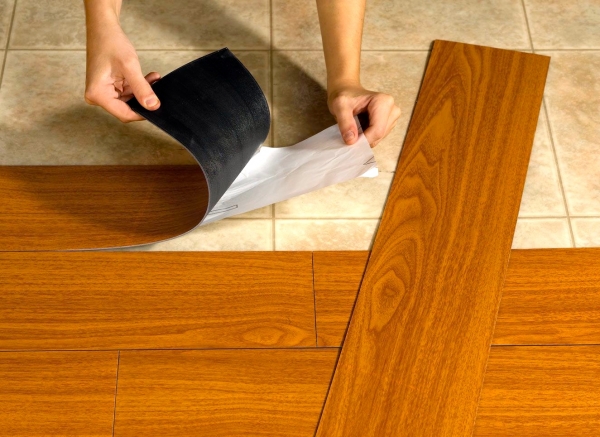If your RV interior is starting to show its age, especially but not necessarily only underfoot, consider new floor covering to make it look—and feel—newer.
Chances are, your RV has carpeting that shows its age where foot traffic is heaviest—definitely by the entry door, probably near the bathroom, and possibly where traffic routinely flows.
And then there’s the color. Color analysts from different industries actually sit down every year and decide not only what colors will be the “it” shades for the coming years, but even what the colors will be called. That’s right: There are people actively planning to make your carpet, draperies and furniture obsolete simply because of the colors they are.
On Being a Slave to Fashion
You can always say, “No, I’m not getting rid of perfectly good carpet.” After all, who’s going to enter your RV here at Crossing Creeks RV Resort & Spa and say, “Your colors are so outdated.” What they’ll say is, “Oh, Charlie, look. Remember when we had carpet that color?”
If carpet is worn from lots of boondocking or trips to the shore, you have choices in recovering your floor tastefully.
New Carpeting
Look for short-pile, closed-loop carpeting because it cleans up well, but you certainly don’t have to. You’ll save hundreds of dollars if you can find a remnant, often avalable at carpet store, discount stores and odd-lot bargain outlets.
You’ll have ample choices in color, whether you go with solid or a heather that gives the look of a solid but shows a little more life. If you’re having movie stars over, choose red. (OK. Just kidding.) When keeping your furniture, keep in mind the fabric on them. Get carpet swatches if you can and lay them on the fabric to make sure there’s no clash. If your furniture is solid, a pattern carpet might work. But be careful, since RV floor space is, all things considered, small enough to be overwhelmed by too busy a print.
Then choose between roll carpet, which must be stretched tightly before it’s stapled subfloor, or self-adhering carpet squares, also called carpet tiles. Laying roll carpet can be trying, including physically, but it’s possible to do it yourself. The fewer seams, the better looking the results. Make sure to snug seams so they disappear. Sometimes taping seams underneath with carpet tape helps.
Installing carpet tiles is easier. They’re often used in offices and sometimes in below-grade family rooms. You’ll have to scrape off the remnants of any previous floorcovering and pull staples so the subfloor surface is smooth and clean. You’ll also have to find the center of the floor and strike perpendicular chalk lines, starting at the center and working toward walls and furniture. That way, carpet squares in the center of the floor, where they are most obvious, will be full. Cutoff carpet tiles will be near walls or cabinets.
Short-pile carpet cleans up well. Spills, mud and sand come up easier than with plush carpet. Wet spots will dry faster.
Laminate Floors
Laminate floors have been round for about 35 years. They are laid over a thin foam pad but are not nailed down. The rectangular slats, which are high-density fiberboard with laminate coverings resembling wood or grouted stone, snap together to become one giant slab. Seams are barely visible. Laminate floors must have about a quarter-inch of play at the edges so they can float with temperature and humidity changes. Edges get moldings to cover the gap.
Installation isn’t particularly hard. You will need a chop saw to shorten some pieces and a jigsaw to cut around wall protrusions and cabinets.
When you’re done you have a wood-look floor that’s water- and mud-resistant but not waterproof. It cleans up easily from spills and tracked mud, and salt and sand don’t soak in. Dogs may need a little time to get used to its lack of traction for their claws, but they will, and claws won’t scratch it—not even after a decade of use.
For a little more color, warmth and cushion, you can spread an area rug over top, with a nonslip layer in between.
Vinyl Plank Flooring
Vinyl plank flooring comes in two types. Both, after installation, appear similar to a laminate floor, with a wood grain look.
One style of vinyl plank is a floating floor that’s installed over a thin foam pad. Floating vinyl planks adhere to one another, but not to the pad. The second type installs more like traditional vinyl tiles, with a peel-off back that exposes an adhesive that sticks directly to the plywood subfloor.
Vinyl planks are easier to work with than laminate. They cut with a utility knife. No saw is needed.
Vinyl planks are waterproof and impervious to mud, sand and salt. They won’t stain easily and wipe clean with a sponge mop or, after a spill, with a paper towel. They hold up well against claws.
Photo Credits: ciker.com
